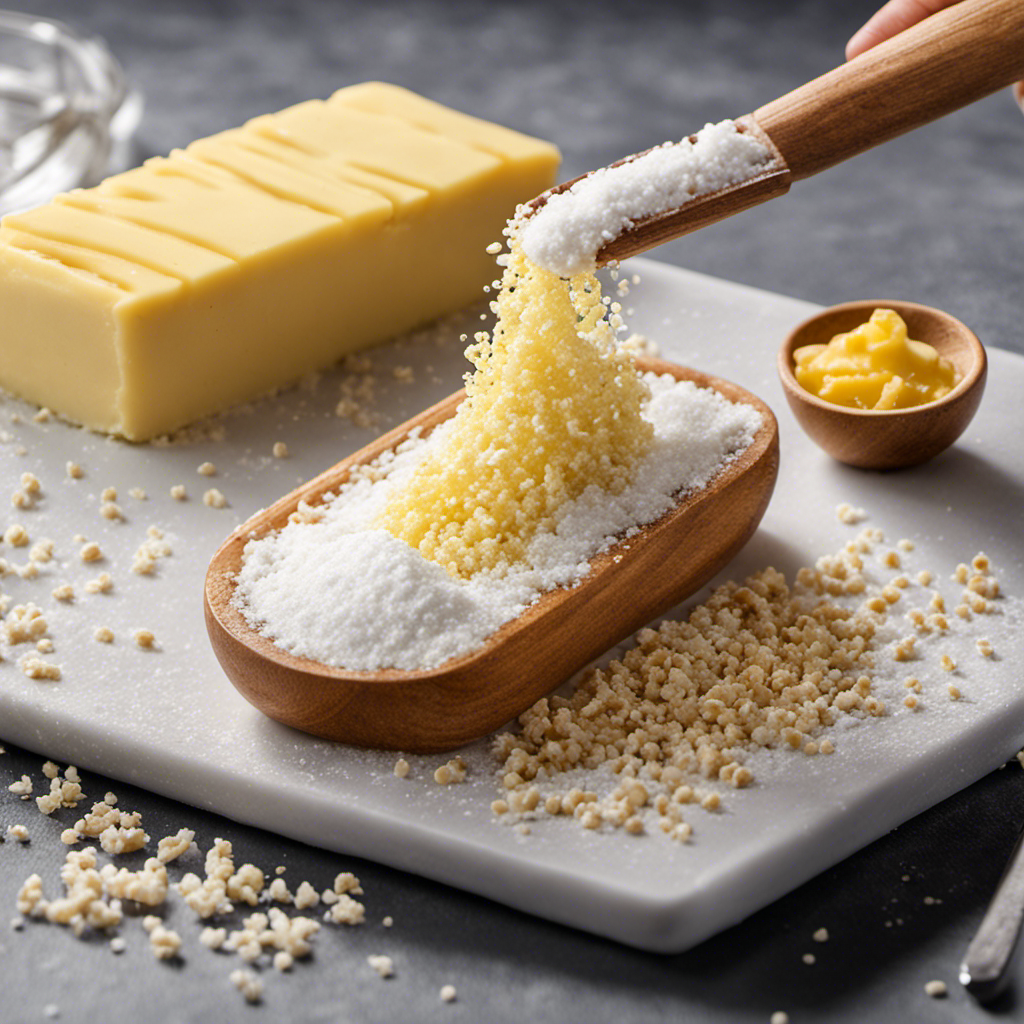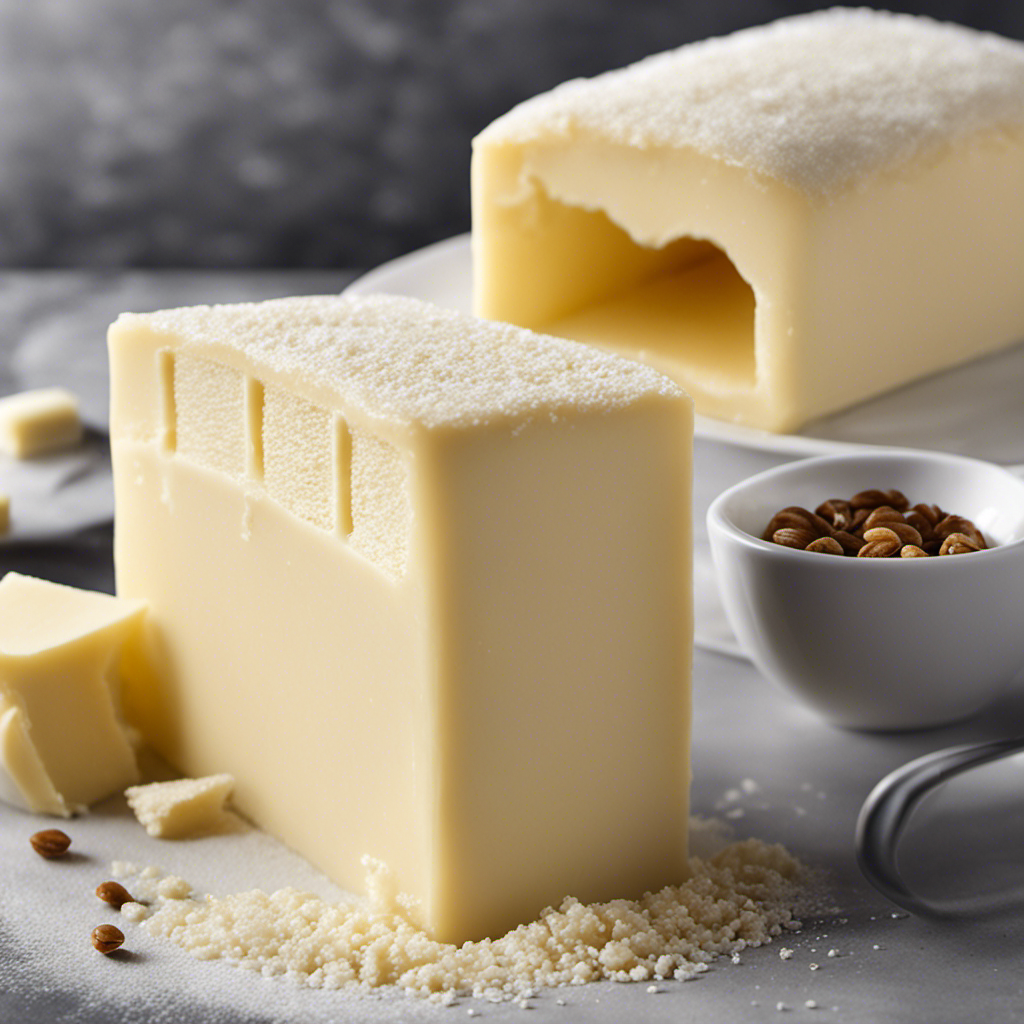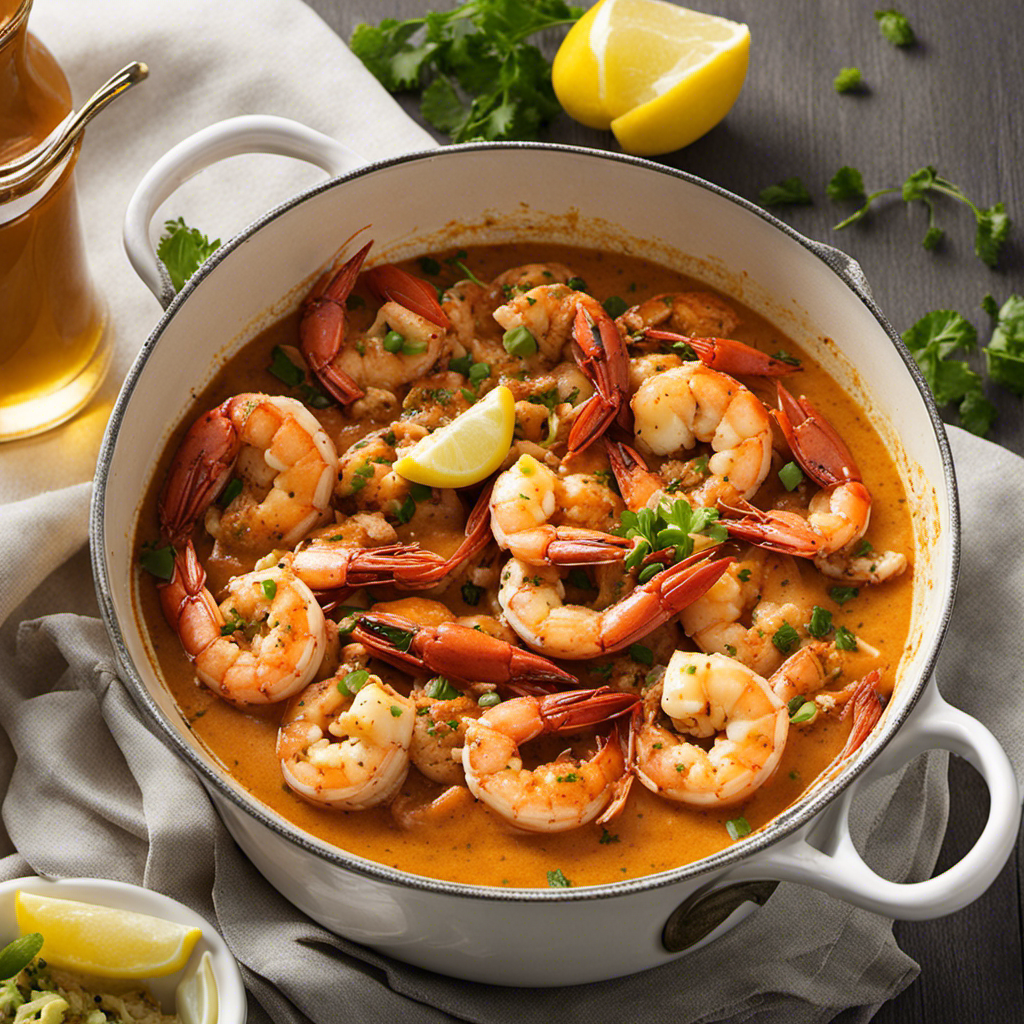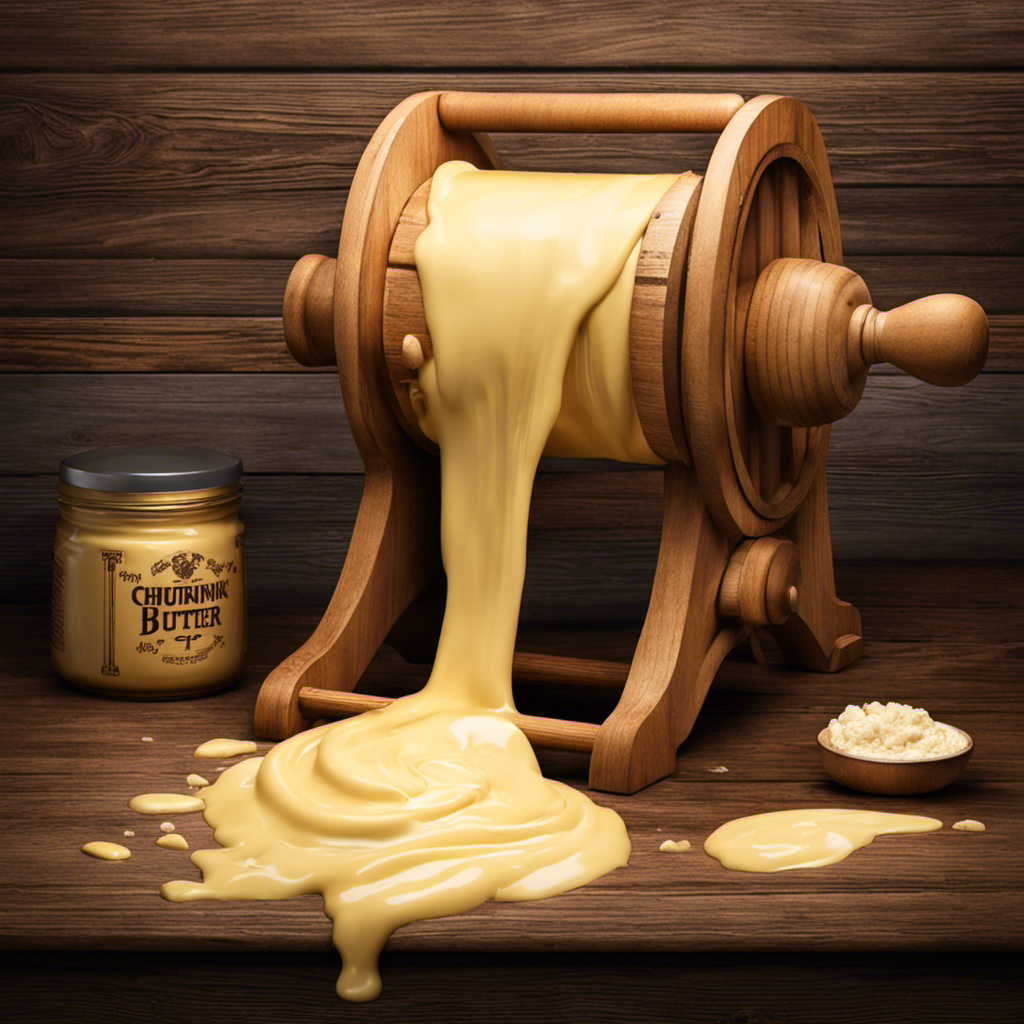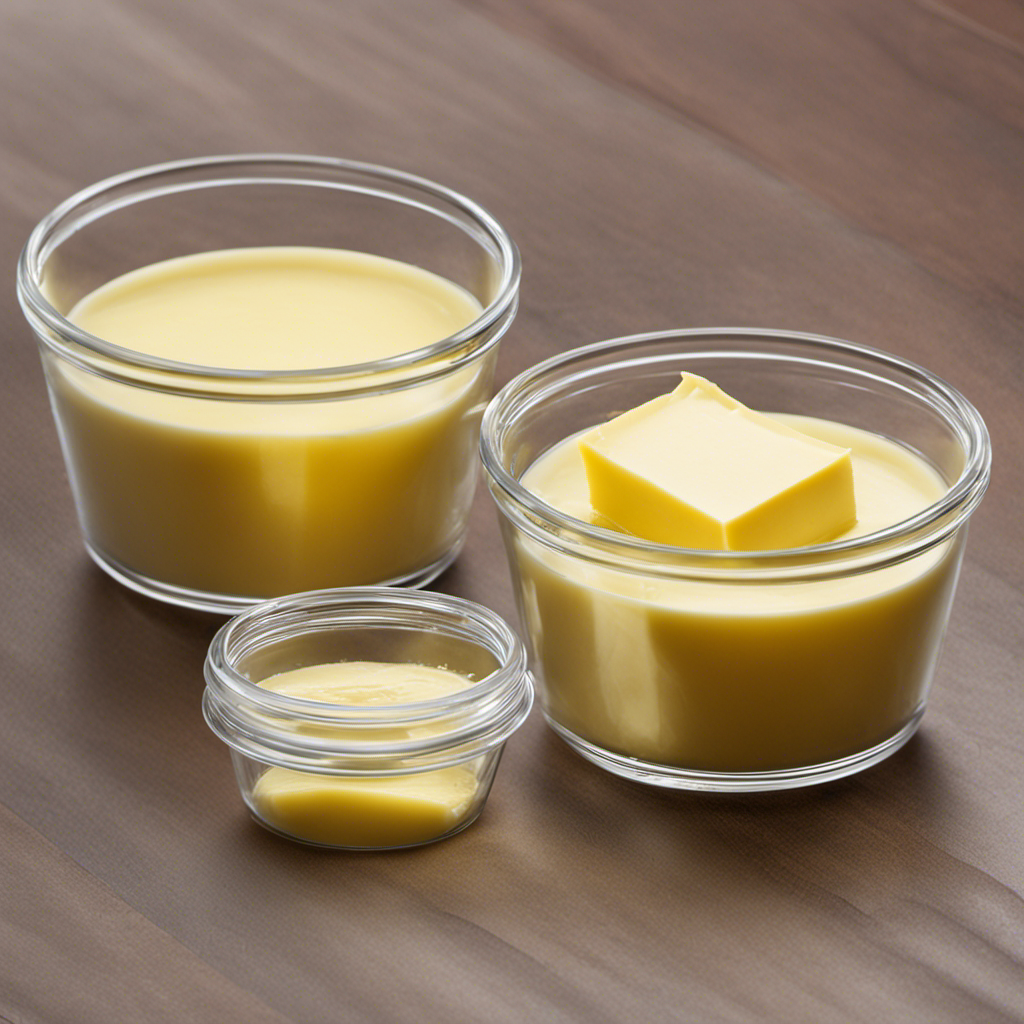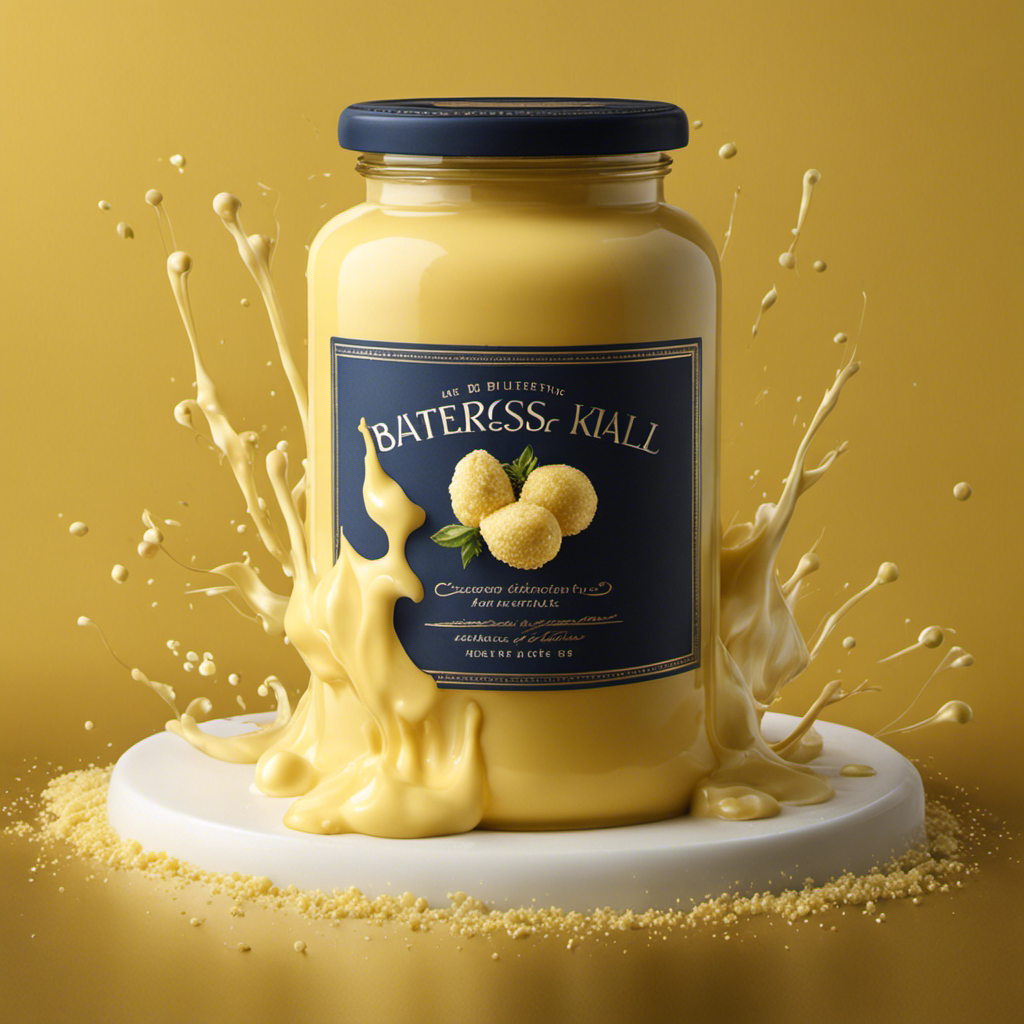As a home baker, have you ever considered the benefits of using unsalted butter in your baking recipes? One advantage is that it gives you the ability to adjust and control the flavor of your dish by adding your preferred amount of salt. Personally, I have always questioned how much salt to incorporate when using unsalted butter.
In this article, I will explore the role of salt in baking, discuss recommended salt-to-butter ratios, and provide tips for incorporating salt into unsalted butter. By understanding these factors, you’ll be able to confidently enhance the flavors of your baked goods.
Key Takeaways
- Using unsalted butter allows control over the saltiness of dishes.
- Salt enhances the natural flavors of ingredients and balances sweetness in baked goods.
- Balancing flavors ensures a harmonious eating experience and the perfect balance of flavors in cooking.
- Factors to consider when adding salt to unsalted butter include desired level of saltiness, other ingredients, and experimentation to find the right combination of sweet and salty flavors.
Why Use Unsalted Butter
If you’re wondering why you should use unsalted butter, it’s because it allows you to have more control over the saltiness of your dishes. Using unsalted butter gives you the freedom to adjust the salt levels according to your taste preferences and dietary needs.
When you use salted butter, you’re essentially adding salt to your recipe without even realizing it. This can lead to dishes that are overly salty and may not appeal to everyone. Unsalted butter, on the other hand, provides a neutral base, allowing you to season your dishes with the perfect amount of salt.
Additionally, using unsalted butter is beneficial for individuals who need to monitor their sodium intake or those who prefer a milder taste in their food.
Understanding the Role of Salt in Baking
To properly understand the role of salt in baking, you should know that it enhances flavors and helps to balance the sweetness in your recipes. Salt is not just a seasoning, but a key ingredient that can make a significant difference in the taste of your baked goods.
Here are three ways in which salt contributes to achieving flavor depth and balancing saltiness:
-
Enhances Flavor: Salt has the ability to enhance the natural flavors of ingredients, making them more pronounced and enjoyable to the palate.
-
Balances Sweetness: Salt acts as a counterbalance to the sweetness in baked goods, preventing them from becoming overly sugary and providing a harmonious taste.
-
Improves Texture: Salt helps to strengthen the gluten structure in dough, resulting in a better texture and overall baking experience.
The Importance of Balancing Flavors
Remember, balancing flavors is crucial in baking because it ensures that no single taste overpowers the others, resulting in a harmonious and enjoyable eating experience. When it comes to cooking, the impact of salt on our taste buds cannot be underestimated. Salt not only enhances the overall flavor of a dish but also helps to balance other flavors. It can bring out the sweetness in desserts, reduce bitterness in vegetables, and add depth to savory dishes. However, it is important to use salt judiciously. Too much salt can overpower the other flavors and make the dish unpleasant. Conversely, too little salt can result in a bland and dull taste. By understanding the role of salt and its impact on taste buds, we can achieve the perfect balance of flavors in our cooking.
| Flavor | Role | Examples |
|---|---|---|
| Sweet | Enhances sweetness | Salted caramel, salted chocolate |
| Bitter | Reduces bitterness | Salted greens, salted coffee |
| Savory | Adds depth and richness | Salted meats, salted sauces |
| Sour | Balances acidity | Salted citrus, salted pickles |
| Spicy | Balances heat | Salted chili, salted curry |
Factors to Consider When Adding Salt to Unsalted Butter
When it comes to enhancing the flavor of butter, salt plays a crucial role. Adding just the right amount of salt to unsalted butter can balance its saltiness and sweetness, creating a harmonious taste profile.
It is important to consider the desired level of saltiness and the other ingredients in the recipe to achieve the perfect balance of flavors.
Salt Enhancing Butter Flavor
You can enhance the flavor of your butter by adding a pinch of salt. Salt not only enhances the taste of food but also has several benefits when added to unsalted butter. Here are some reasons why salt can enhance the flavor of butter:
- Salt balances the sweetness: Adding a small amount of salt to butter can help balance out any excessive sweetness, creating a more well-rounded flavor.
- Salt amplifies the savory notes: Salt has the ability to enhance and amplify the savory flavors in butter, making it more delicious and satisfying.
- Salt increases aroma: Salt can enhance the aroma of butter, making it more aromatic and enticing.
Balancing Saltiness and Sweetness
To balance the saltiness and sweetness in your recipe, try adding a small amount of sugar to the butter. This will create a delicious combination of sweet and salty flavors that can elevate your dish. Finding the perfect balance between these flavors is key to creating a well-rounded and satisfying taste experience.
When it comes to sweet and salty flavor combinations, experimentation is key. You can start by adding a teaspoon of sugar to the butter and tasting it. If the saltiness is still too overpowering, you can add another teaspoon of sugar. Keep adjusting the amount of sugar until you achieve the desired balance.
Here is a table that can help guide you in finding the perfect balance:
| Butter (in grams) | Salt (in grams) | Sugar (in grams) |
|---|---|---|
| 100 | 1 | 2 |
| 200 | 2 | 4 |
| 300 | 3 | 6 |
| 400 | 4 | 8 |
| 500 | 5 | 10 |
Recommended Salt-to-Butter Ratios
The recommended salt-to-butter ratios can vary depending on personal preference and the recipe being used. It’s important to strike the right balance of flavors to enhance the overall taste of your dish. Here are some tips to help you navigate the world of salt and butter:
-
Start with a basic ratio of 1/4 teaspoon of salt per 1/2 cup (1 stick) of unsalted butter. This is a good starting point for most recipes.
-
Adjust the salt amount based on personal preference. If you like your food on the saltier side, you can increase the amount of salt slightly.
-
Consider the other ingredients in your recipe. If you’re using salty ingredients like bacon or olives, you may want to reduce the amount of salt added to the butter.
-
Taste as you go. The best way to determine the right salt-to-butter ratio is by tasting your food throughout the cooking process. Adjust the salt as needed until you achieve the desired flavor.
Adjusting Salt Amounts Based on Personal Preference
When adjusting salt amounts based on personal preference, it’s important to taste the food as you go to ensure you achieve the desired flavor. Adjusting the saltiness of a dish can be a delicate process, as adding too little or too much salt can greatly impact its overall taste.
To find the perfect balance, start by adding a small amount of salt and gradually increase it until the desired level of saltiness is achieved. Remember that different ingredients have varying levels of saltiness, so it’s important to consider the overall flavor profile of the dish.
Keep in mind that some dishes may require additional seasoning from other ingredients, such as herbs or spices, to enhance the flavor. By adjusting salt amounts based on personal preference and continuously tasting the food, you can ensure that the dish achieves the perfect balance of flavors.
Now, let’s move on to some tips for incorporating salt into unsalted butter.
Tips for Incorporating Salt Into Unsalted Butter
For a simple way to infuse flavor into unsalted butter, try mixing in a pinch of salt until well combined. Adding salt to unsalted butter not only enhances the taste but also helps to bring out the natural flavors of the ingredients you’re using.
Here are some tips to help you incorporate salt into your unsalted butter:
-
Experiment with different herbs: Incorporating herbs like rosemary, thyme, or basil into your butter adds a delicious aromatic flavor. Simply chop the herbs finely and mix them into the softened butter along with the salt.
-
Try different spices: Don’t be afraid to get creative and experiment with spices like garlic powder, paprika, or cayenne pepper. These spices can add a unique kick to your butter and elevate the taste of your dishes.
-
Use flavored salts: If you want to take your flavored butter to the next level, try using flavored salts like smoked salt or truffle salt. These salts add an extra layer of complexity and depth to your butter.
Common Mistakes to Avoid When Adding Salt
To avoid common mistakes, make sure you taste the butter before adding any additional seasoning. This step is crucial because unsalted butter can vary in saltiness, so it’s important to assess its flavor before proceeding. There are several factors to consider when deciding how much salt to add to unsalted butter. These include personal preference, the intended use of the butter, and the recipe you are following. It’s always a good idea to start with a small amount of salt and gradually add more if needed. Additionally, keep in mind that some dishes may require less salt than others. By taking these factors into consideration and tasting the butter along the way, you can avoid the common mistake of over- or under-seasoning your unsalted butter.
| Factors to Consider | Recommended Salt Amount |
|---|---|
| Personal Preference | Start with a pinch and adjust to taste |
| Intended Use | Baking: 1/4 to 1/2 teaspoon per 1 cup of butter. Cooking: 1/8 to 1/4 teaspoon per 1 cup of butter. |
| Recipe | Follow the recipe’s recommended salt amount, then adjust to taste if necessary. |
Alternative Seasonings to Enhance Flavor in Unsalted Butter
When it comes to enhancing the flavor of unsalted butter, there are several alternative seasonings that can be used.
One option is to create herb-infused butter variations, such as rosemary or thyme-infused butter, which can add a delightful aroma and taste to dishes.
Another option is to incorporate citrus zest and spices into the butter, which can provide a tangy and aromatic flavor profile.
Lastly, exploring sweet and savory pairings, such as honey and garlic or cinnamon and nutmeg, can create a unique and delicious taste experience.
Herb-Infused Butter Variations
You’ll love the delicious flavors of herb-infused butter variations. Herb-infused butter is a versatile and flavorful ingredient that can elevate any dish. Here are three subtopics to help you enjoy herb-infused butter:
-
Herb-Infused Butter Recipes:
- Garlic and Herb Butter: Melt butter and mix in minced garlic, chopped fresh herbs like parsley, thyme, and rosemary. Use it to spread on bread or melt over grilled vegetables.
- Lemon and Dill Butter: Combine softened butter with lemon zest, fresh dill, and a pinch of salt. This tangy and herbaceous butter is perfect for seafood dishes or roasted potatoes.
- Chili and Lime Butter: Mix softened butter with lime juice, lime zest, chili powder, and a dash of salt. It adds a zesty kick to grilled corn or shrimp.
-
Different Uses for Herb-Infused Butter:
- Flavored Toast: Spread herb-infused butter on warm toast for a savory and aromatic breakfast.
- Grilled Meats: Brush herb-infused butter on grilled steaks or chicken for added flavor and moisture.
- Roasted Vegetables: Toss vegetables in herb-infused butter before roasting for a delicious side dish.
-
Storage Tips for Herb-Infused Butter:
- Store in the refrigerator in an airtight container for up to two weeks.
- Freeze in small portions or ice cube trays for longer storage.
- Label and date your herb-infused butter for easy identification.
Citrus Zest and Spices
If you’re looking to add a burst of citrus flavor to your herb-infused butter, try incorporating citrus zest and spices.
Citrus zest refers to the outermost layer of the fruit’s skin, which is packed with aromatic oils and intense flavor. To extract the zest, use a fine grater or a citrus zester.
You can then mix the zest into your softened butter along with your preferred combination of spices. Some popular spice combinations include lemon zest with garlic and dill for a zesty kick, or orange zest with cinnamon and nutmeg for a warm and cozy flavor.
The possibilities are endless, so don’t be afraid to experiment and find your favorite citrus zest and spice combination for your herb-infused butter.
Sweet and Savory Pairings
For a delicious combination of sweet and savory flavors, try incorporating ingredients like honey, maple syrup, or brown sugar into your herb-infused butter. These sweet additions can enhance the natural umami flavor of the butter and create a delightful balance of tastes.
Here are three ways to enjoy this sweet and savory pairing:
- Spread the sweet and savory butter on warm, toasted bread for a delightful breakfast or snack.
- Use it as a glaze for roasted vegetables, adding a caramelized sweetness to the savory flavors.
- Incorporate the butter into your favorite baking recipes, such as cookies or muffins, to add a unique twist to traditional treats.
The sweet and salty combinations in this herb-infused butter provide a satisfying contrast that can elevate your culinary creations. The umami flavor pairings create depth and complexity, making each bite a memorable experience.
Frequently Asked Questions
Can I Use Salted Butter Instead of Unsalted Butter in Baking Recipes?
Yes, you can use salted butter instead of unsalted butter in baking recipes. The main difference is that salted butter already contains salt, so you may need to adjust the amount of salt in the recipe accordingly.
How Does Salt Enhance the Flavor of Unsalted Butter?
Salt enhances the flavor of unsalted butter by balancing its richness and bringing out its natural flavors. Other ways to enhance the flavor of unsalted butter include adding herbs, spices, citrus zest, or even a touch of sweetness like honey or maple syrup.
What Are Some Other Ways to Balance Flavors in Baking Besides Using Salt?
When it comes to balancing flavors in baking, there are alternatives to salt. Some options include using citrus zest, spices like cinnamon or nutmeg, or even sweeteners like honey or maple syrup.
Can I Use a Different Seasoning Instead of Salt to Enhance the Flavor of Unsalted Butter?
When using unsalted butter, it’s important to consider how much salt to add. However, there are other flavor enhancers besides salt that can be used with unsalted butter to enhance its taste.
How Can I Prevent Adding Too Much Salt to Unsalted Butter and Ruining the Recipe?
To prevent salt overuse and avoid ruining the recipe, I find it helpful to start by discussing the current question without the context of how much salt to add if using unsalted butter.
Conclusion
In conclusion, using unsalted butter in baking allows for greater control over the amount of salt in a recipe. By understanding the role of salt in baking and considering factors such as personal preference and recommended ratios, one can achieve a perfectly balanced flavor.
Just like a painter adding the final brushstroke to a masterpiece, adding salt to unsalted butter is the finishing touch that elevates the flavors and brings harmony to your culinary creation.
So go ahead, grab that unsalted butter and create a symphony of flavors in your next baking adventure.
